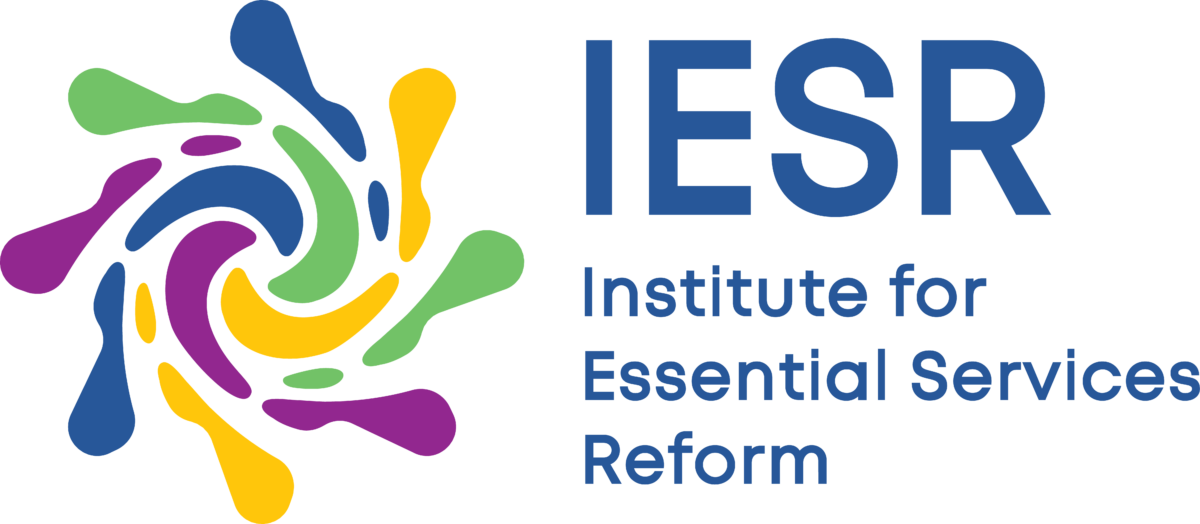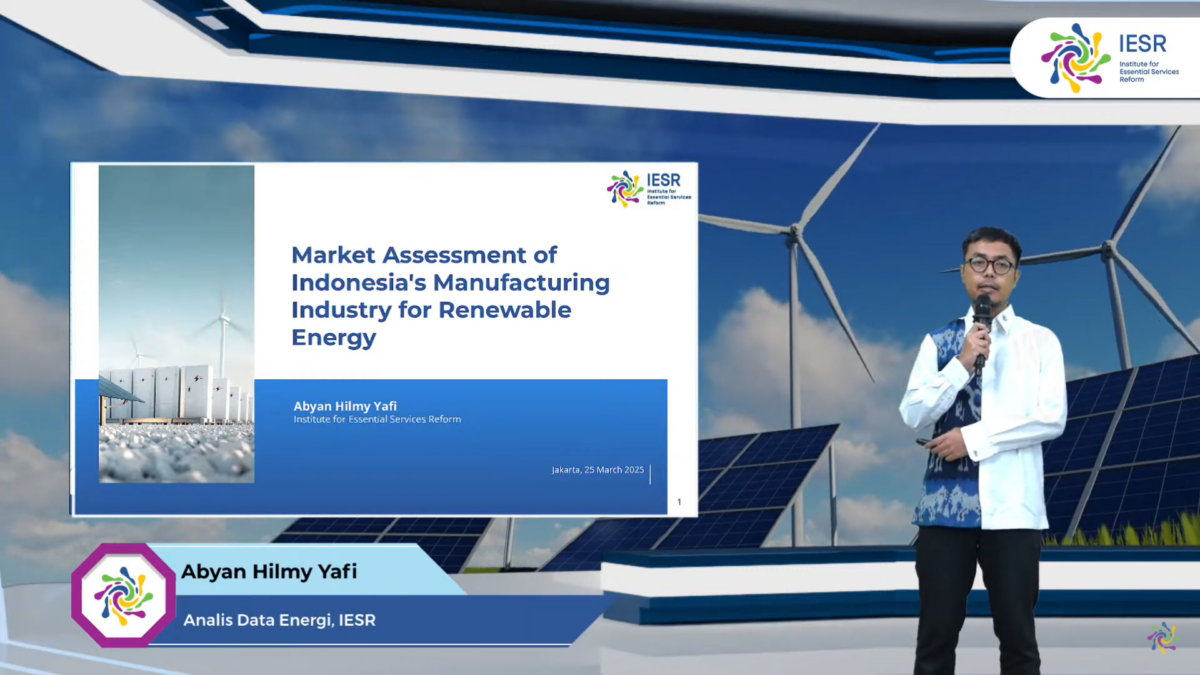Jakarta, March 25, 2025 – The National Electricity General Plan (RUKN) published at the end of 2024 targets that of the 444 GW of energy generation capacity by 2060, 73.6 percent (326 GW) will come from new and renewable energy sources. Solar, wind and battery energy contribute around 109 GW, 74 GW and 34 GW respectively. These efforts aim to achieve net zero emission (NZE) by 2060.
However, the capacity of these three technologies is predicted to increase further with the addition of green hydrogen production to 266 GW of solar power, 73.5 GW of wind power, and 58 GW of energy storage.
To achieve these targets, the Institute for Essential Services Reform (IESR) encourages the Government of Indonesia to develop the renewable energy technology manufacturing industry and its supply chain, and build a competitive renewable energy ecosystem. This will increase added value, reduce technology imports, ensure energy security and accelerate the energy transition. To support this, IESR conducted a market assessment of the renewable energy manufacturing industry in the study “Market Assessment for Indonesia’s Manufacturing Industry for Renewable Energy” which was launched on Tuesday (25/3).
This study highlights the huge opportunity for Indonesia’s solar, wind and battery energy manufacturing industries to expand. Optimizing their development has the potential to deliver significant economic benefits, including the creation of 9.7 million job-years by 2060. In addition, the total economic potential of these three sectors is estimated to reach USD 551.5 billion (approximately IDR 8,824 trillion) by 2060.
IESR Executive Director, Fabby Tumiwa, explained that the utilization of renewable energy in Indonesia is still very low, despite its potential of more than 3,686 GW. He gave an example, the utilization of PLTS has only reached 0.32 GW, far below the potential of more than 3,300 GW available.
The low adoption of renewable energy has an impact on the slow development of the manufacturing industry in this sector. Fabby considers that the fragmented regulatory framework, limited skilled labor, and weak link between research and energy policy are the main obstacles to the integration of the renewable energy manufacturing sector in Indonesia.
“Currently, our clean energy technology manufacturing industry is still in its infancy. Without a robust domestic supply chain, we risk over-reliance on technology imports, which not only increases vulnerability to global supply disruptions, but also limits the economic benefits we can gain from this energy transition. This study can inspire the downstream program that is a priority for the Prabowo-Gibran administration. If well developed, this third industry of technology can be part of Indonesia’s long-term economic transformation, which is not only based on commodities, but on added value and technology,” said Fabby.
The study “Market Assessment for Indonesia’s Manufacturing Industry for Renewable Energy” specifically looks at the situation and opportunities for three renewable energy technologies, namely solar, wind and batteries. Looking at the solar energy manufacturing industry, IESR said that until June 2024, Indonesia’s solar module production capacity reached 4.7 GW/year. This number will increase to 19 GW/year before 2030 along with the development of the solar module industry integrated with silicon wafers and cells. IESR’s analysis shows that the development of the solar PV industry and its supply chain (including goods and services, and to support the targets set in the RUKN) has the potential to create 5.7 million job-years of employment, with an economic potential of up to USD 236.3 billion by 2060.
Meanwhile, for the wind power industry, IESR assesses that demand for this technology is still low. This contrasts with global wind power capacity growth of 118 GW by 2023 (up 36 percent from 2022). Indonesia only has two wind farms with an installed capacity of 154.3 MW, far from its potential of 155 GW. In fact, the development of the manufacturing, construction, operation and maintenance industry until decommissioning of wind farms has the potential to contribute USD 75.2 billion to the economy and create 1.8 million job-years by 2060.
Furthermore, for the battery industry, by 2024 demand will increase, especially for electric vehicle batteries, up to 25 times higher than in 2022. The development of the battery industry for energy storage and electric vehicles has an economic potential of up to USD 240 billion and 2.2 million jobs by 2060.
Abyan Hilmy Yafi, Energy Data Analyst, IESR emphasized the importance of developing Indonesia’s renewable energy manufacturing industry and supply chain to meet growing domestic and global market demand. In addition to the economic benefits, this move also provides greater control over product markets and supply chains, empowers domestic raw materials, and encourages industrial growth.
“The development of these three technologies will reduce dependence on imports and avoid the impact of vulnerability to global price fluctuations. To ensure the benefits of this development, the government needs to support it with clear and consistent policies, incentives, and funding,” Hilmy explained.
The IESR study provides four recommendations to encourage the development of the renewable energy manufacturing industry. First, Indonesia needs to ensure a manufacturing supply chain, at least for the assembly of solar panels, wind turbines and batteries, including the assembly and implementation of engineering, procurement and construction (EPC) projects. Further development of the supply chain needs to be supported by a thorough feasibility study and involvement of national and global stakeholders. Second, the government needs to formulate a roadmap for sustainable renewable energy adoption in tandem with a roadmap for strengthening the renewable energy manufacturing industry. The formulation of this roadmap should also be in line with national energy planning.
Third, the transformation of industrial strategy into economic strategy requires government support in the form of incentives, financing, and policies that create an ideal ecosystem from upstream to downstream and are consistent in their application. Fourth, Indonesia needs to prepare human resources (HR) through appropriate education and training policies, so that the workforce has environmentally friendly skills that support the renewable energy industry.

